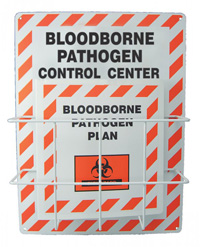| The Home page of ILPI's Safety Data Sheet (SDS) Resource, the leader in SDS information since 1995! | |
| The history and philosophy behind this resource. | |
| A curated collection of books and reference materials concerning Safety Data Sheets and closely related topics. | |
| Paste your plain text SDS into the SDS-Demystifier, and it will be converted into a hypertext-enriched document with links to detailed explanations of each key term. | |
| An extensive list of frequently asked questions about Safety Data Sheets including regulations, content, compliance, and more. | |
| A humorous take on Safety Data Sheet jargon. Fill in the blanks on our entry form to generate a personalized Unsafety Data Sheet to share with your coworkers. | |
| Since 1995, we've maintained this massive curated list of the best places to find Safety Data Sheets on the Internet. | |
| Way more than a glossary, this hypertext-enhanced resource covers hundreds of SDS-related terms and expert knowledge. Each entry includes both the SDS relevance and links to additional authoritative resources. | |
| Archived results of Safety Data Sheet related polls taken by some of our millions of site visitors | |
| You are here! The OSHA regulations behind SDS regulations, including the inspection guidelines and over 400 official interpretations letters under the Hazard Communication Standard | |
| Commercial suppliers of SDS authoring and management software as well as cloud compliance services. | |
| Commercial companies that will create SDS's for your specific needs as well as SDS translation companies. |

Safety signs, banners, and scoreboards? Get yours at Safety Emporium!
| Title: 08/12/1992 - Training requirements for maintenance of housekeeping personnel. | |
| Record Type: Interpretation | Standard Number: 1910.120; 1910.1030; 1910.1200(h) |
OSHA requirements are set by statute, standards and regulations. Our interpretation letters explain these requirements and how they apply to particular circumstances, but they cannot create additional employer obligations. This letter constitutes OSHA's interpretation of the requirements discussed. Note that our enforcement guidance may be affected by changes to OSHA rules. Also, from time to time we update our guidance in response to new information. To keep apprised of such developments, you can consult OSHA's website at https://www.osha.gov
August 12, 1992
Mr. Kenneth D. Smith
Assistant Manager, Casualty Risk Control Services
Sedgwick James of Michigan, Inc.
3001 West Big Beaver Road, Suite 700
Troy, Michigan 48084-3164
Dear Mr. Smith:
This is in response to your inquiry of June 30, concerning the Occupational Safety and Health Administration's (OSHA) hazardous Waste Operations and Emergency Response final rule (HAZWOPER), 20 CFR 1910.120.

Safety Emporium carries bloodborne pathogen compliance centers and related compliance materials.
You specifically requested clarification on the definition of emergency response in 1910.120 paragraph (a)(3), and asked whether hospital housekeeping staff would be considered "maintenance personnel" in keeping with that definition.
The term "maintenance personnel" as used in the standard was intended to refer to line repair personnel in manufacturing settings who routinely encounter incidental releases of hazardous substances in the course of their normal work activities. Custodial, janitorial, or housekeeping staff are not considered "maintenance personnel" under 1910.120, and may or may not require training under the standard. In determining training requirements for maintenance or housekeeping personnel, the employer must consider the degree of hazard involved, using worst-case clean-up scenarios. Employees will require training under 1910.120 when the potential for an emergency exists.
In determining if the potential for an emergency exists, the key factor is the actual or estimated hazardous exposure or degree of danger to employees and other persons. The fact that housekeeping staff are responding from outside the release area is secondary to the extent of the hazards in determining whether a situation constitutes an emergency or an incidental release. An incidental release is one that does not pose an imminent health or safety hazard requiring immediate clean-up to prevent death or serious injury, and which housekeeping staff can safely clean up without danger to themselves.
If the employer determines that the potential exists for an emergency to develop, then employees must receive, as a minimum, first responder awareness level training in accordance with 1910.120(q)(6)(i). Such training must be designed to enable workers to distinguish a non-emergency incidental release from a release which is beyond their ability to handle without danger to themselves. First responder awareness level training must also instruct employees about how to initiate emergency procedures.
All employees must be adequately trained to perform their assigned job duties in a safe and healthful manner, regardless of their job title. Per your telephone conversation with Ms. Karen Kircher of my staff, housekeeping staff who are expected to handle clean-up of medical waste and infectious materials in health-care settings in non-emergency situations must be trained in accordance with the requirements of 29 CFR 1910.1030, OSHA's Bloodborne Pathogens standard, while clean-up of other hazardous substances (e.g. mercury from a broken thermometer) would necessitate training under the Hazard Communication Standard, 1910.1200.
We hope this information is helpful. If you have any further questions please contact MaryAnn Garrahan at (202) 523-8036.
Sincerely,
Patricia Clark, Director
Directorate of Compliance Programs
The original official public domain version of this document is available from OSHA at https://www.osha.gov/laws-regs/standardinterpretations/1992-08-12-3.